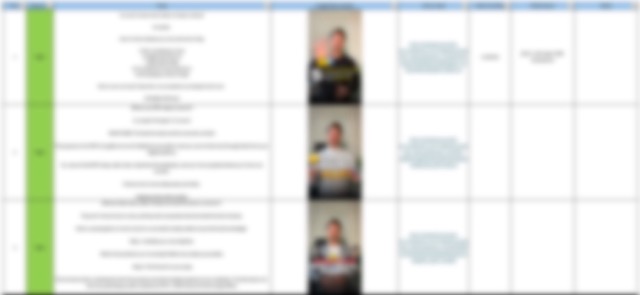

Starting with video content shouldn’t negatively affect your already established systems and processes.
This means you need a content plan that will:
In this article, I am going to show you the entire process of how you can leverage YouTube, Instagram, TikTok, and LinkedIn with minimal effort while creating the perfect video content system to grow your client base.
The first step is to identify where your target audience spends the most time. Do they watch more long-form videos on YouTube, or do they prefer short-form content on TikTok and Instagram? This is crucial because you need to know which platform to focus on.
Let’s say you’re a sales coach and your target audience consists of agency owners who already have a client base, established businesses, and are now looking to scale.
Ask yourself: Where are these people spending their time when looking for someone to help them scale their business?
Considering that the topic of scaling a business isn’t simple, they would likely turn to YouTube for valuable in-depth videos. Their second option might be LinkedIn, where they could search for an article explaining this concept, or they could connect with industry leaders and reach out for help.
On the other hand, Instagram and TikTok, with their 40-60 second video formats, would make it difficult to explain these complex topics. Not to mention that these business owners would probably be a bit reluctant to take advice from these platforms, as they are often associated with entertainment.
Since YouTube is the most likely place where they’d search for business advice, you, as a sales coach, should focus primarily on growing your YouTube channel by consistently posting valuable content.
If you’re in a niche that’s more B2C oriented, it might be a combination of some other platforms, like YouTube and Instagram, which is quite common for fitness coaches, for example.
Once you know which platform is going to be your main one, you need to decide how many times a month you are going to post.
Here’s the frequency I’d recommend:
A common standard for YouTube is publishing one video per week, between 7-15 minutes long. This is the sweet spot for coaches and consultants.
All platforms love when the creator is publishing consistently. So, try to commit to the schedule you choose. Additionally, when you post regularly, your audience begins to expect and look forward to your content, which increases engagement.
Think of it like a TV show. If an episode drops every Sunday at 8 PM, viewers will look forward to it. But if it’s unpredictable, sometimes Sunday, sometimes Wednesday, sometimes skipping a week, people lose interest. The same applies to your coaching business.
To stick with the example of sales coaching and choosing YouTube as the main platform, recording 4 videos will take around 2-3 hours, depending on your experience in front of the camera.
Since you already have scripts for your YouTube videos, you can extract all key points and create additional 20-30 short-form videos.
At this point, you might ask: Why do I need short-form content if my target audience is mainly on YouTube?
While YouTube is your primary platform, spending an extra 1-2 hours recording short-form videos allow you to leverage Instagram, TikTok and LinkedIn.
This increases your reach, builds recognition among your audience on those platforms, and funnels a percentage of them to your YouTube channel. This can happen either through calls to action or organically.
This strategy is highly efficient. You invest approximately 3-5 hours per month and get video content for YouTube, Instagram, TikTok, and LinkedIn. That means 4 long-form YouTube videos and 20-30 short-form videos across three additional platforms, all with just a few hours of work.
To keep everything running smoothly, you need a plan that outlines which videos will be posted on which dates and platforms. If you commit to posting four YouTube videos per month and short-form content Monday through Friday, that’s 20 short-form videos per month.
Managing all this content can quickly become overwhelming, especially after two or three months when you’re juggling multiple videos and struggling to keep track of what’s been posted. This is where a Content Calendar becomes essential, it helps you systematically map out your content and prevents confusion.

Our team has developed a simple yet effective Excel Content Calendar (that can also be used on Google Sheets). It allows our clients to:
It’s an all-in-one solution for keeping everything organized and ensuring consistency.
Recording and publishing videos can be chaotic, especially if you’re doing this alone. To help you stay on top of your content strategy, we’re offering our Content Calendar Template for free.
Let’s discuss how we can work together in a free 30-min consultation call.
SCHEDULE A CALL